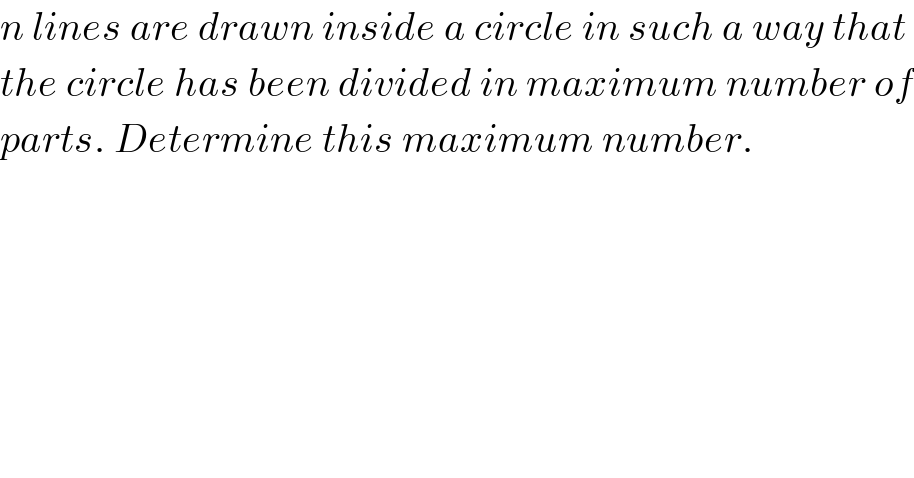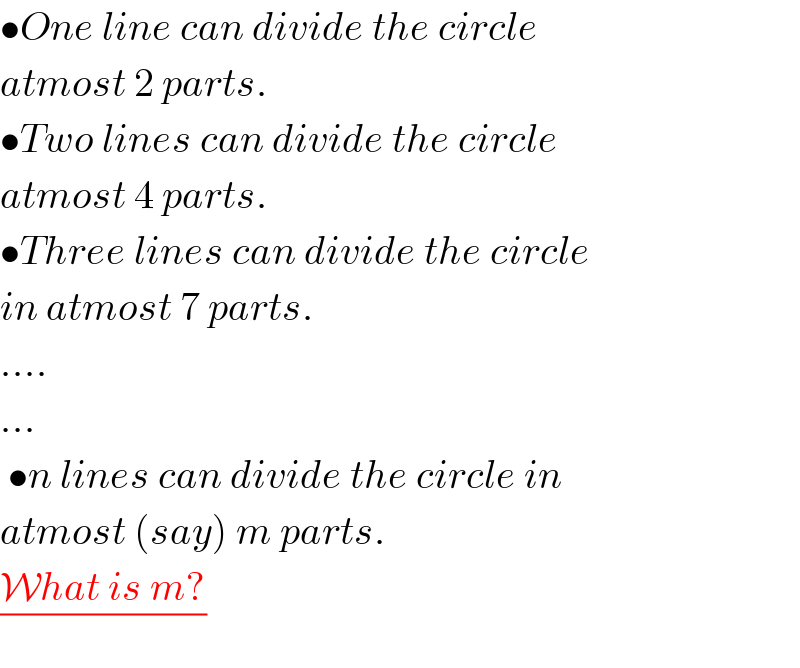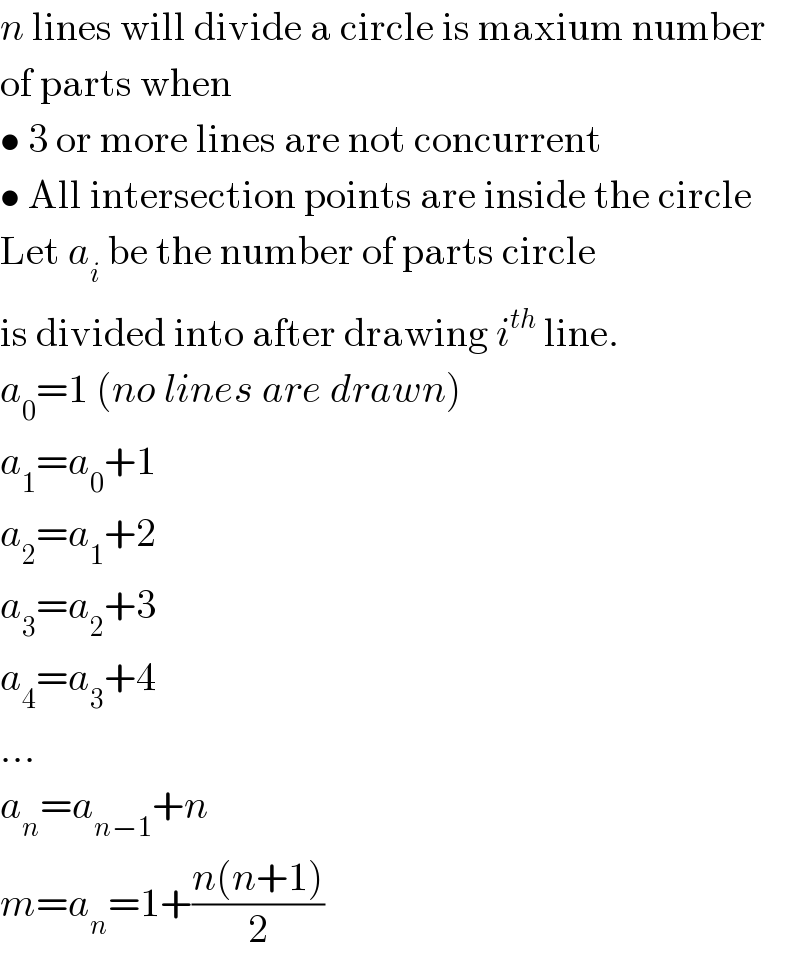
Question Number 2642 by Rasheed Soomro last updated on 24/Nov/15

$${n}\:{lines}\:{are}\:{drawn}\:{inside}\:{a}\:{circle}\:{in}\:{such}\:{a}\:{way}\:{that}\: \\ $$$${the}\:{circle}\:{has}\:{been}\:{divided}\:{in}\:{maximum}\:{number}\:{of} \\ $$$${parts}.\:{Determine}\:{this}\:{maximum}\:{number}. \\ $$
Commented by RasheedAhmad last updated on 24/Nov/15

$$\bullet{One}\:{line}\:{can}\:{divide}\:{the}\:{circle} \\ $$$${atmost}\:\mathrm{2}\:{parts}. \\ $$$$\bullet{Two}\:{lines}\:{can}\:{divide}\:{the}\:{circle} \\ $$$${atmost}\:\mathrm{4}\:{parts}. \\ $$$$\bullet{Three}\:{lines}\:{can}\:{divide}\:{the}\:{circle} \\ $$$${in}\:{atmost}\:\mathrm{7}\:{parts}. \\ $$$$.... \\ $$$$... \\ $$$$\:\bullet{n}\:{lines}\:{can}\:{divide}\:{the}\:{circle}\:{in} \\ $$$${atmost}\:\left({say}\right)\:{m}\:{parts}. \\ $$$$\frac{\mathcal{W}{hat}\:{is}\:{m}?}{} \\ $$
Answered by prakash jain last updated on 24/Nov/15

$${n}\:\mathrm{lines}\:\mathrm{will}\:\mathrm{divide}\:\mathrm{a}\:\mathrm{circle}\:\mathrm{is}\:\mathrm{maxium}\:\mathrm{number} \\ $$$$\mathrm{of}\:\mathrm{parts}\:\mathrm{when} \\ $$$$\bullet\:\mathrm{3}\:\mathrm{or}\:\mathrm{more}\:\mathrm{lines}\:\mathrm{are}\:\mathrm{not}\:\mathrm{concurrent} \\ $$$$\bullet\:\mathrm{All}\:\mathrm{intersection}\:\mathrm{points}\:\mathrm{are}\:\mathrm{inside}\:\mathrm{the}\:\mathrm{circle} \\ $$$$\mathrm{Let}\:{a}_{{i}} \:\mathrm{be}\:\mathrm{the}\:\mathrm{number}\:\mathrm{of}\:\mathrm{parts}\:\mathrm{circle} \\ $$$$\mathrm{is}\:\mathrm{divided}\:\mathrm{into}\:\mathrm{after}\:\mathrm{drawing}\:{i}^{{th}} \:\mathrm{line}. \\ $$$${a}_{\mathrm{0}} =\mathrm{1}\:\left({no}\:{lines}\:{are}\:{drawn}\right) \\ $$$${a}_{\mathrm{1}} ={a}_{\mathrm{0}} +\mathrm{1} \\ $$$${a}_{\mathrm{2}} ={a}_{\mathrm{1}} +\mathrm{2} \\ $$$${a}_{\mathrm{3}} ={a}_{\mathrm{2}} +\mathrm{3} \\ $$$${a}_{\mathrm{4}} ={a}_{\mathrm{3}} +\mathrm{4} \\ $$$$... \\ $$$${a}_{{n}} ={a}_{{n}−\mathrm{1}} +{n} \\ $$$${m}={a}_{{n}} =\mathrm{1}+\frac{{n}\left({n}+\mathrm{1}\right)}{\mathrm{2}} \\ $$
Commented by Rasheed Soomro last updated on 25/Nov/15

$$\mathcal{E}{xcellent}\:\:\:\mathcal{S}{ir}! \\ $$
